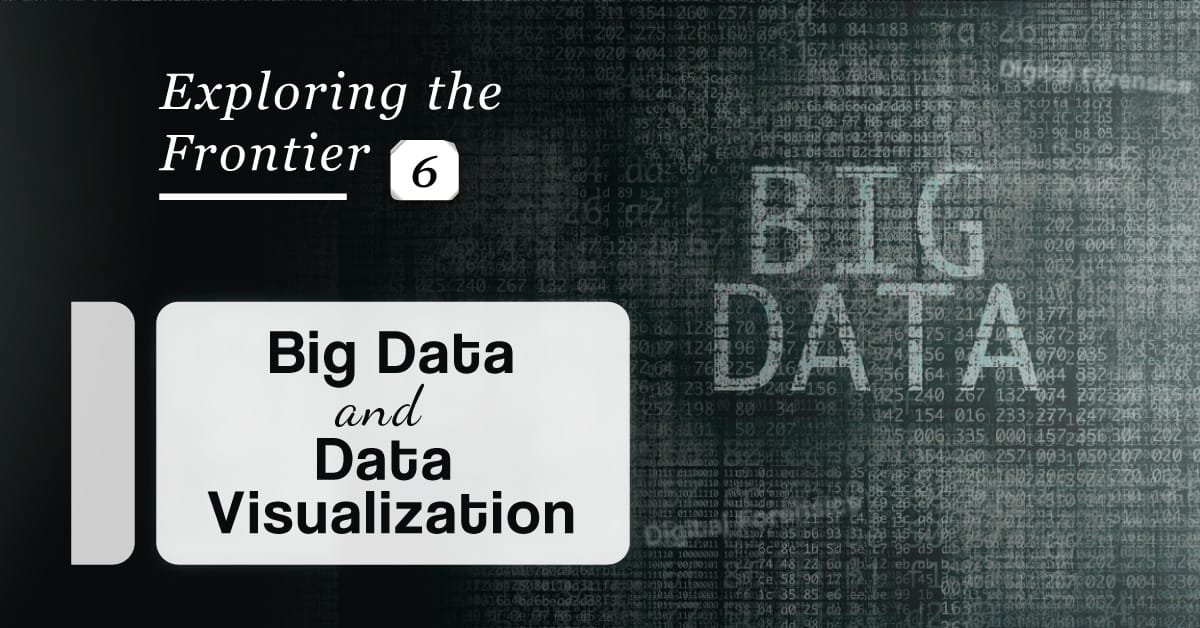Contributed By: Rochelle Marroquin, B.B.A in Cyber Security
As digital forensics continues to evolve at a rapid pace, the ability to manage and analyze vast amounts of data has become a top priority for forensic professionals. In our ongoing series, “Top 10 Hottest Topics in Digital Forensics for 2024,” we’ve explored some of the most cutting-edge trends shaping the industry. From cloud forensics to mobile app fraud, each topic has delved into critical innovations driving digital investigations.
In this sixth installment, we shift our focus to Big Data and Data Visualization, a crucial area that is transforming how forensic experts manage, interpret, and present data. With the explosion of digital information, professionals must now navigate increasingly complex datasets. Big data tools and visualization techniques are helping them cut through the noise to uncover critical insights and evidence more efficiently.
Join us as we explore how these advancements are reshaping the future of digital forensics, empowering investigators to handle massive amounts of data while ensuring the most relevant information is revealed. The whole series is available here.
In the ever-evolving world of digital forensics, one of the most pressing challenges for professionals today is the sheer volume of data they must sift through. As businesses, governments, and individuals generate unprecedented amounts of information every second, digital forensic experts are tasked with identifying, analyzing, and preserving relevant data in a timely manner. With traditional methods quickly becoming inadequate, big data and data visualization techniques are transforming the landscape of digital forensics, allowing experts to manage and make sense of these massive datasets more effectively.
The Challenge of Big Data in Forensics
Big data refers to data sets so large and complex that they are difficult, if not impossible, to process using traditional methods. In the realm of digital forensics, the rise of cloud computing, IoT devices, social media platforms, and other digital technologies has exponentially increased the amount of information involved in investigations. These large data sets are often diverse, including emails, text messages, videos, images, transaction logs, and more.
The challenge for digital forensic professionals lies in identifying the relevant pieces of evidence from this vast sea of information. While the amount of data can be overwhelming at times, big data tools provide valuable insights that, if properly extracted, can be crucial to investigations. Big data tools enable forensic experts to process this information at scale, filtering out the noise and identifying relevant evidence more efficiently.
Big Data Tools: Automating the Search for Evidence
To navigate this data explosion, digital forensic experts are increasingly relying on advanced big data tools that allow them to automate the collection, processing, and analysis of vast datasets. These tools can analyze massive amounts of structured and unstructured data, correlating different data points to uncover gaps, patterns, timelines, communication trails, and anomalies that might otherwise go unnoticed.
For instance, a large-scale fraud investigation may involve sifting through millions of financial transactions. Big data tools can quickly analyze the data for fictitious revenues, such as unusual expense patterns or connections between seemingly unrelated fabricated transactions, helping investigators pinpoint areas that require further investigation.
The Role of Data Visualization
While big data tools are essential for handling massive datasets, data visualization plays a critical role in making the information accessible and actionable. Data visualization techniques allow forensic professionals to present complex data in a visual format, such as graphs, charts, and timelines, making it easier to interpret and analyze.
In digital forensics, this can be particularly useful in building a narrative or timeline of events. Visualizing data patterns or anomalies over time can help investigators spot critical pieces of evidence, identify trends, and understand the context in which an incident occurred. Additionally, data visualization simplifies the process of explaining complex findings to non-technical stakeholders, such as legal teams or corporate decision-makers, by presenting the evidence in an easily digestible format. An analyst with strong investigative skills and a good understanding of data patterns can interpret these datasets and turn them into usable findings. When you view multiple cases simultaneously, it’s simple to identify red flags.
Applications in Real-World Investigations
Big data and data visualization are proving to be indispensable in various types of forensic investigations, from cybersecurity breaches and financial fraud to intellectual property theft and insider threats. For example, in cybersecurity incidents, forensic analysts can use big data tools to examine logs from firewalls, network traffic, and intrusion detection systems, identifying patterns that signal a breach. Data visualization can then help illustrate how the attack unfolded and what vulnerabilities were exploited, providing a clear picture of the event.
Similarly, in cases of employee misconduct or insider threats, big data tools can analyze email communications, social media interactions, and other digital footprints to detect patterns of behavior that suggest wrongdoing. Visualizations can highlight critical connections and relationships between individuals, events, or transactions that might be missed in a text-based analysis.
The Future of Big Data in Digital Forensics
As the digital world continues to grow, big data and data visualization will become even more integral to digital forensics. Emerging technologies like artificial intelligence (AI) and machine learning (ML) will further enhance the capabilities of big data tools, allowing forensic professionals to uncover insights and evidence with unprecedented speed and accuracy.
In 2024 and beyond, we can expect continued advancements in these technologies, making it easier for digital forensic experts to manage ever-growing datasets and deliver more effective investigations. Organizations that invest in big data and data visualization tools will not only improve their investigative capabilities but also better protect themselves and their clients from the growing risks posed by cybercrime, fraud, and other digital threats.
Conclusion
Big data and data visualization are not just reshaping digital forensics—they are revolutionizing it. These advanced tools empower professionals to sift through massive datasets with precision, transforming complex evidence into clear, actionable insights. As data grows exponentially, mastering these technologies becomes essential for staying ahead of emerging threats and solving even the most intricate cases. By leveraging big data and visualization, investigators can identify patterns faster, uncover hidden connections, and ensure no critical evidence is left behind, ultimately driving more impactful outcomes.







